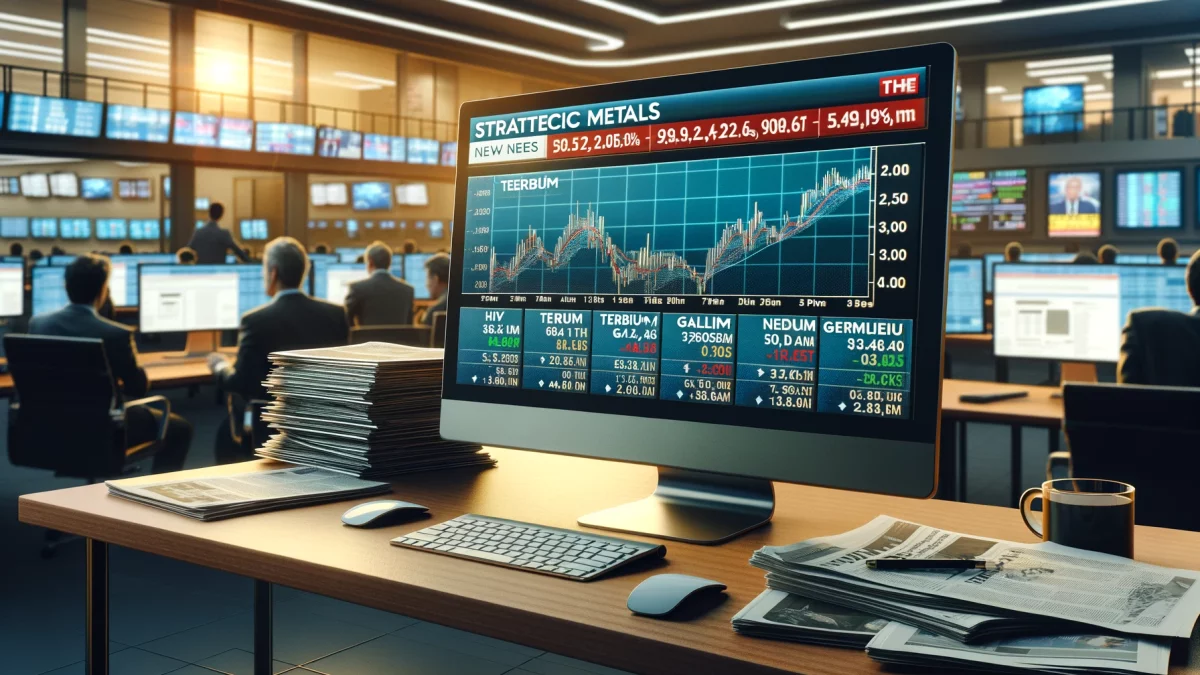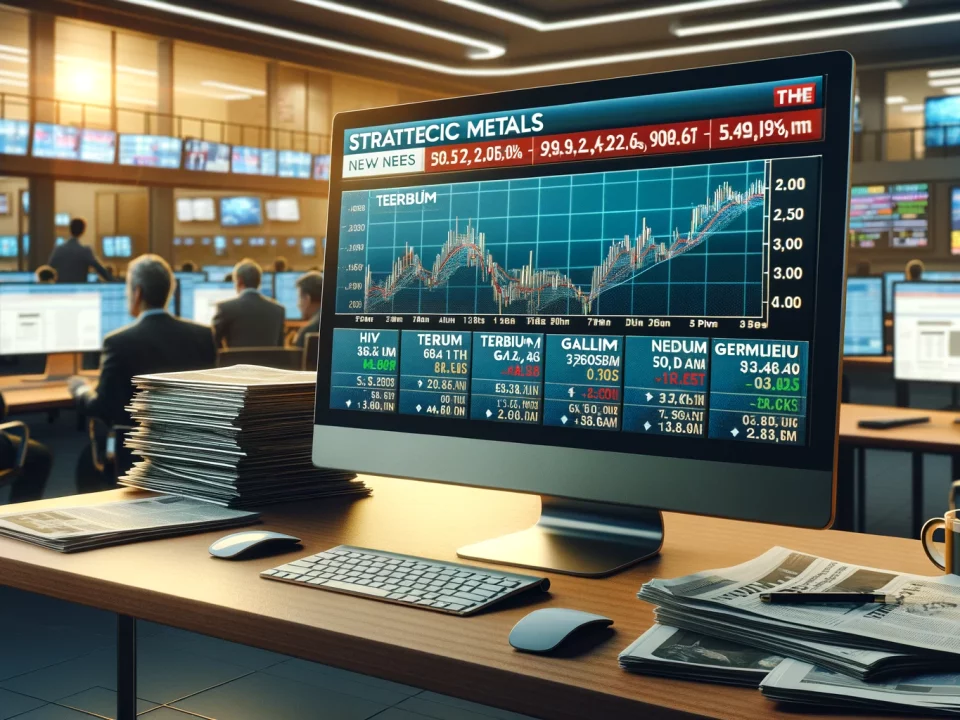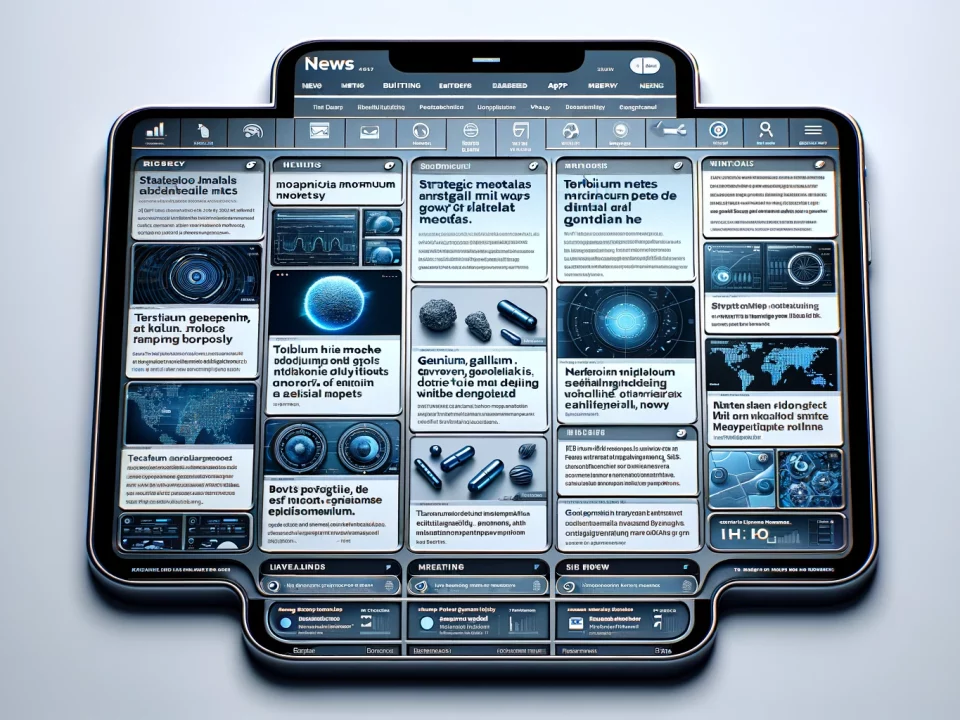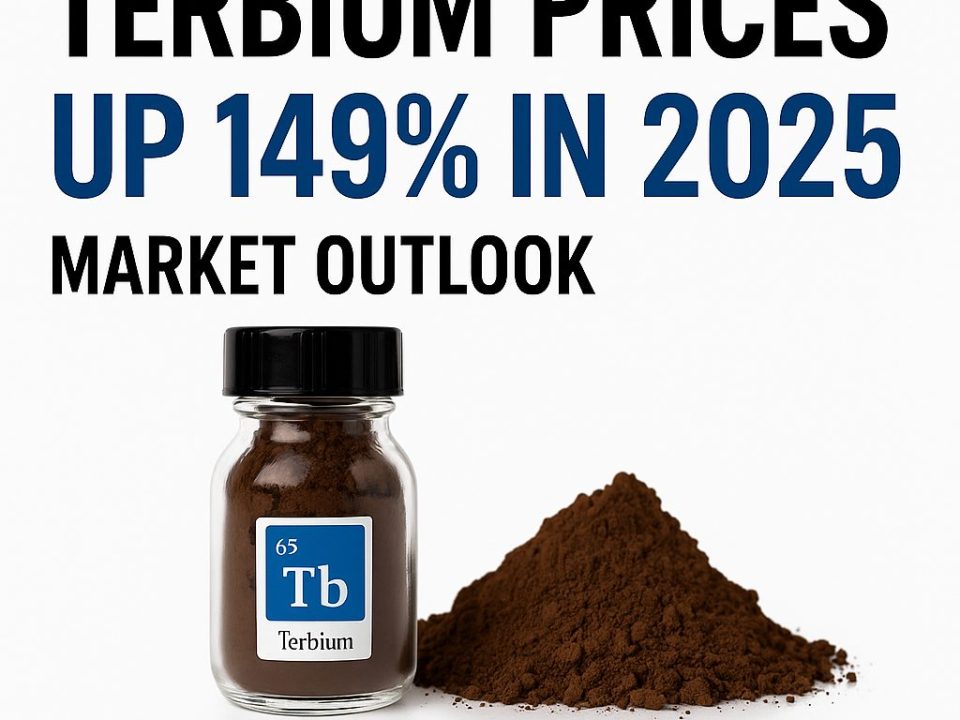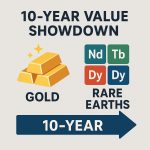
Rare Earths vs. Gold—Which Will Be More Valuable in 10 Years?
May 8, 2025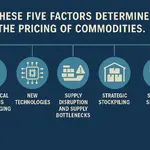
The Hidden Forces Behind Strategic Metals Price Swings
May 12, 2025China released April export data this week, including rare earth numbers. In addition, MP Materials, the only major U.S. rare earth miner, reported quarterly earnings, while its Australian counterpart, Lynas, announced plans to expand abroad.
All this and more will be discussed in our weekly news round-up.
FACT CHECK: HAS CHINA STOPPED RARE EARTH EXPORTS?
There has been much talk about Beijing’s latest export restrictions. Let’s take a closer look.
Amid the escalating trade conflict with the United States, China tightened its export controls on critical raw materials. In response to new US tariffs on foreign goods, particularly steep in the case of Chinese products, Beijing has imposed export controls for certain rare earth elements since April 4.
The affected materials include the rare earth elements dysprosium, terbium, yttrium, gadolinium, samarium, lutetium, and scandium, along with their various compounds and forms. The Chinese government justifies the move on national security grounds, citing the use of these materials in both civilian and military industries. The regulations are not aimed at any specific country but apply universally to all export destinations.
No Formal Export Ban, but Rare Earth Exports Are De Facto on Hold:
However, contrary to some media reports, this licensing requirement is not a blanket export ban. There has been no official directive to halt exports completely. Instead, the new rules give China the legal and procedural means to block specific shipments, particularly if authorities believe their intended use could counter national interests.
While no formal stop is in place, exports are effectively on hold for now: processing the newly required export licenses is expected to take up to 45 business days, as it did in earlier episodes. The potential impact can be illustrated by the case of gallium, which has been subject to similar regulations since August 2023. It took several months for exports to resume after the initial disruption.
UNITED STATES EXPANDS LIST OF FAST TRACKED STRATEGIC METALS PROJECTS:
The US government has added a second group of critical mineral projects to the FAST-41 permitting program, expanding efforts to boost domestic mineral production and reduce reliance on imports. Announced on Friday, the new batch joins the ten projects unveiled in April (we reported), bringing the total number to twenty listed under the program. The White House added that more projects are expected to be added in the coming weeks.
The Federal Permitting Dashboard features projects included in FAST-41 and offers public updates on environmental review timelines and authorizations. It was launched in 2015 to streamline federal permitting for large infrastructure and resource projects, helping to accelerate development timelines that can otherwise take years or even decades to complete.
The complete list of projects and updates regarding them can be found on the Federal Permitting Dashboard.
UNITED STATES: CIA BACKS STRATEGIC METALS START UP –
Alta Resource Technologies, a Colorado-based startup focused on critical mineral extraction, is developing a method to extract rare earth elements using engineered proteins. This technology selectively binds to and extracts minerals from unconventional feedstocks such as low-grade ores, mining byproducts, waste streams, and end-of-life electronics.
With this method, the company aims to offer a more sustainable alternative to traditional mining while strengthening domestic supply chains for rare earth elements. The company also aims to extend its technology to other critical minerals in the future. With investor funding, Alta plans to grow its technical team and launch its first commercial pilot projects.
In its latest funding round, Alta also secured support from In-Q-Tel (IQT), the strategic investment arm of the US Central Intelligence Agency (CIA). This highlights the growing strategic importance that the US government places on securing domestic critical mineral resources: In March 2025, President Donald Trump issued an Executive Order aimed at boosting domestic mineral mining and processing.
Trump later also ordered an investigation into the import reliance of all 50 minerals classified as critical by the US Geological Survey. While some supply chains are diversified, China still dominates many, including rare earth elements. Beijing’s recent export controls on seven of them further underscore the global dependency on the People’s Republic for these key resources.
UNITED STATES: NEW DEVELOPMENT PROCESS FOR RARE EARTHS COULD REDUCE DEPENDENCE ON CHINA –
A U.S.-developed process could simplify rare earth production and reduce dependence on China.
Rare earth elements are critical in many modern technologies, from smartphones and air conditioners to the electric motors that power vehicles. However, the growing global demand for these materials is met by a supply chain dominated by a single player: China. The country leads in mining rare earths and has an even tighter grip on their processing and refinement. Current separation technologies, developed in China, are highly energy-intensive, involve multiple complex steps, and rely on chemicals that can harm the environment.
Now, researchers in the United States have developed a promising alternative that could significantly improve domestic access to these vital resources. According to Interesting Engineering, this innovation represents a breakthrough. Developed at the University of Texas at Austin, the new method takes inspiration from biological systems and their selective filtering mechanisms. Human cells, for example, use specialized proteins to allow specific ions through while blocking others—a concept that the researchers have adapted to separate rare earth elements.
Tiny Gatekeepers That Let Only Rare Earths Through:
Drawing on this biological model, the team engineered synthetic membrane channels using nanoscopic pores. These nanopores are built around structures called pillar arrays—ring-shaped organic molecules. The scientists modified these molecules to block common ions like potassium, sodium, and calcium from passing through aqueous solutions while selectively allowing rare earth ions such as europium and terbium. Terbium is particularly critical, as its separation is tough, and China holds an overwhelming share of its production.
The membrane channels demonstrated remarkable selectivity, far surpassing traditional solvent-based methods, which require dozens of steps to achieve similar results. The next goal is to integrate this technology into a scalable system suitable for industrial applications. The research team is developing a platform capable of transporting rare earth ions and other strategically essential elements like lithium and gallium. They aim to enable more efficient and environmentally sustainable resource extraction in the US.
While this marks a significant step forward, it still falls short of complete independence from China’s rare earth supply chain. In addition to mining and refining, China dominates the further processing of rare earths into high-performance magnets and other advanced materials. The US is only beginning to build these capabilities.
AUSTRALIA: LYNAS CORP EYES PROJECTS IN BRAZIL AND MALAYSIA –
The mining company shows interest in deposits outside of Australia.
Lynas’s current business model involves mining rare earths in Australia and processing them at its facility in Malaysia. Part of the refining process is also being shifted to Western Australia, where the company, the most important producer of these resources outside China, is currently optimizing separation processes at its Kalgoorlie site.
However, this week, CEO Amanda Lacaze floated another strategy to position Lynas as a strong alternative to China. According to a Reuters report, the company is considering acquiring rare earth deposits in Malaysia and Brazil. It’s also exploring partnerships with junior miners to help bring their projects online more quickly. In such cases, Lynas would likely contribute both expertise and capital.
Geological Similarities Make Brazil and Malaysia Attractive:
Lacaze also highlighted the geological similarities between the deposits in Brazil and Malaysia, which resemble those found in Myanmar, one of the key producers of rare earths. Specifically, these are ion-adsorption clays, which allow for relatively easy extraction of the resources and tend to have higher concentrations of heavy rare earths. There’s growing interest in members of this subgroup, such as gadolinium and terbium, particularly since China, the leading country for rare earth processing, has made their export subject to approval.
China is likely to keep a close eye on Lynas’s plans. Political and economic ties between China and Malaysia are currently growing stronger. During a recent visit, Chinese President Xi Jinping even raised the possibility of a technology transfer for rare earth processing. Meanwhile, Brazil’s mining sector is attracting increasing investment from Chinese companies.
RESOURCE WEALTH MEETS TECHNICAL EXPERTISE: SAUDI ARABIA AND THE US PLAN MINING DEAL-
A potential agreement has been announced before President Trump’s state visit to the Gulf nation.
The United States and Saudi Arabia want to deepen their cooperation in mining and mineral resources. According to a report published Tuesday by the Gulf state’s official news agency, a deal is currently being discussed. The announcement comes shortly before US President Donald Trump is scheduled to visit Saudi Arabia.
Saudi Arabia is working to diversify its economy, which has long depended heavily on oil production. The country’s vast and largely untapped mineral resources play a key role in this strategy. According to the government, these reserves, including phosphate, gold, and rare earth elements, are valued at 2.5 trillion US dollars. Early last year, the kingdom announced it would invest 182 million dollars in exploring these resources, calling it the most extensive exploration program in the world.
An analyst at an Australian market intelligence firm, Discovery Alert, described the proposed Saudi-American mining partnership as a strategic turning point in global resource politics. It would combine Saudi Arabia’s enormous mineral wealth with the United States’ technological expertise.
Talks about collaboration between mining companies from both countries have been ongoing for several weeks. According to Reuters, MP Materials, the operator of the only rare earth mine in the United States, is among the potential partners for Ma’aden, Saudi Arabia’s state-owned mining company. Together, they could expand rare earth production within the kingdom. The Chinese company Shenghe, a shareholder in MP Materials, is also reportedly involved in the discussions.
CHINA RELEASES RARE EARTH EXPORT VOLUMES:
Exports were up year over year but down month over month in April, as new export rules took effect. Imports also declined.
Customs data shows that China exported 4,784.8 tons of rare earths in April, a 4.8% increase compared to the same month last year. However, exports were down by approximately 15.6% from March 2025. The decline follows Beijing’s introduction of export controls on April 4 targeting seven 17 rare earth elements and their various compounds. Although the measures fall short of a full ban, industry experts say shipments of the restricted elements have stalled mainly as the new licensing system is being finalized.
Despite these restrictions, the bulk of China’s rare earth exports in recent years have comprised elements not currently subject to controls, such as lanthanum and cerium, which are primarily used in the chemical and glass industries, respectively.
Meanwhile, China’s rare earth imports also edged down, dropping about 4% in April to 12,622.7 tons. For the first four months, total imports are down approximately 25% year-on-year.
More detailed trade data from Chinese customs is expected later this month, which should shed further light on the impact of the export controls on both global supply chains and domestic markets.
USA’S MP MATERIALS REPORTS REVENUE GROWTH:
A US rare earth company boosts revenue and output, but rising production costs outweigh the bottom line.
MP Materials released its financial results on Thursday for the quarter ended March 31 (PDF). The company, which specializes in rare earth mining in the United States, reported revenue of $60.8 million, an increase of 25 percent compared to last year. It also announced a record production of 563 tons of the magnet material neodymium-praseodymium, up 36 percent from the previous quarter. Sales of this key product more than doubled year-over-year, reaching 464 tons.
In addition to these positive results, including the first revenues from its newly established magnetics division, MP also posted a net loss of $22.6 million. The main factors were higher interest expenses and increased production costs, partly due to the underutilization of its refining facilities.
These are the first quarterly results since the Las Vegas-based company announced in April that it would suspend exports to China due to sharply increased tariffs (we reported). This move cuts off an important source of revenue, although the financial impact is expected to show up in the current quarter’s results.
Figure of the Week: 340 BILLION – By 2030, developing countries could face massive annual costs for climate adaptation.



